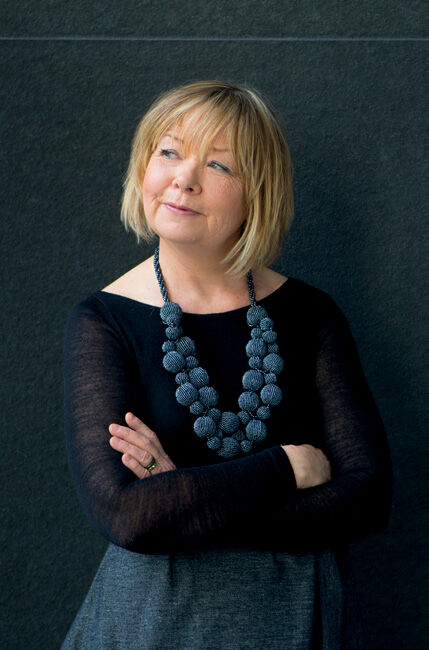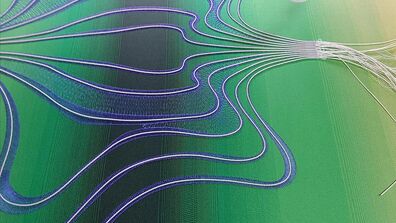
Shaking It Up
The SAIC community works to create equity in museums
by Micco Caporale (MA 2018)

Museums reflect our past, present, and future. Through the objects they display, the audiences they welcome, and the staff who lead them, these repositories of culture are increasingly becoming models for more inclusive communities. While the anthology of art history has historically excluded women and people of color, cultural institutions today are opening up to a wider range of representation both in galleries and behind the scenes. SAIC alums are on the forefront of this movement to expand museum collections and audiences and move beyond diversity to approach equity and inclusion.

The opportunity to establish new institutional practices drew Allison Glenn (Dual MA 2012) to Crystal Bridges, a young museum in Bentonville, Arkansas, which she joined last year as associate curator of contemporary art. In addition to championing the museum’s existing initiatives to reach a broader audience, such as offering free general admission and using bilingual wall texts, Glenn works to showcase artists’ work while challenging visitors to consider the museum’s permanent collection in fresh, unexpected ways. Color Field is an outdoor sculptural exhibition developed by Glenn, which features a diverse mix of emerging and established artists including Assaf Evron (MFA 2013), Odili Donald Odita, and Amanda Ross-Ho (BFA 1998), who use lush colors and enlarged forms in their work. The exhibit invites the public to engage with outdoor sculpture in a new way, allowing visitors to dynamically learn about color field painting across the museum campus.
“One of my biggest frustrations with art history has been how artists are siloed,” she explains. “I’m interested in a curatorial practice that brings multiple diverse voices to the table.”
We’re trying to diversify… who gets to tell the stories of art now and in the future.
Jacqueline Terrassa
A 2019 survey in Artsy of 18 prominent US art museums’ permanent collections revealed that, out of more than 10,000 artists, 87 percent were male, and 85 percent were White. Many arts professionals are shaking up permanent collections in museums to improve equity.
Art museums are also working to shake things up by diversifying their staff. As of 2016, although women represented 48 percent of art museum directors, the positions they held were most often at smaller institutions with lower budgets, according to a study by the Association of Art Museum Directors and the Andrew Mellon Foundation. Two years later, the same study found, 12 percent of art museum leaders overall were people of color.


“If we are proactive in removing barriers to participation, looking at ways where there have been historic disadvantages for some groups to the benefit of others—we can create new models and find approaches that mitigate those histories,” says Jacqueline Terrassa, the Women’s Board Endowed Chair of Museum Education at the Art Institute of Chicago museum. This winter, Terrassa helped the museum attract a new, younger audience from more parts of the city and suburbs than the museum’s typical visitation for a Pitchfork Midwinter event.
In addition to welcoming a broader audience, the Art Institute of Chicago museum also focuses on addressing who accesses professional opportunities at the museum and what support they receive. Unlike many institutions, the museum provides paid internships, internally evaluates and expands where interns come from, and is developing resources to help interns pursue a career in the arts. Terrassa says: “We’re trying to diversify…who gets to tell the stories of art now and in the future.”
SAIC is also fostering diversity and inclusion among arts professionals through a Continuing Studies collaboration with the Joyce Foundation, which provides free education programs to help diversify the workforce in the arts. The program will launch with its first class in fall 2019.

Other museums are looking at shifting how people think of the museum space. Gibran Villalobos (Dual MA 2015) explains his role as assistant curator, performance and public practice liaison at the Museum of Contemporary Art (MCA) Chicago: “My job is to go outside of the institution and connect grassroots organizations with the museum. This isn’t for tours or audience recruitment. It’s trying to figure out how we turn resources within the museum into accessible resources for community groups.”
One group the MCA works with is a collective of artists and art historians who meet to practice speaking Farsi in the MCA’s Commons, a free public space that encourages dialogue and interaction among the public. At the MCA, they’re able to enjoy contemporary art while speaking Farsi.
When the Museum of Modern Art (MoMA) in New York decided to shut down for renovations this summer, Pablo Helguera (BFA 1993) and Wendy Woon (MFA 1982) were thrilled at the changes on the horizon: a broader spectrum of artists showcased and a curatorial shift from emphasis on singular genius to examine how scenes of artists influence one another. As director of adult and education programs and deputy director for education, respectively, they say they were especially excited that MoMA’s education department would move from a wing of the museum to the center.
For museums to be relevant, they have to be more engaged with the issues of our time.
Wendy Woon


“We had been developing a type of open-classroom experimental space where many things could happen: conversations, workshops, experiencing materials and techniques,” says Helguera. “Now we’re presenting this to the public in a permanent form.” Both say theybelieve that art education departments often have the most diversity in museums with direct access to the public, so they’re on the frontlines of innovative programming.
Through the Artists Experiment initiative, MoMA’s Department of Education invited artist Nina Katchadourian to the museum to develop an original approach to public engagement. The artist created Dust Gathering, an audio tour which combined the voices of curators, conservators, and building staff around the topic of dust accumulation in the museum, providing visitors a unique insight into the museum.
“Culture is available outside the museum,” adds Woon. “For museums to be relevant, they have to be more engaged with the issues of our time.”
